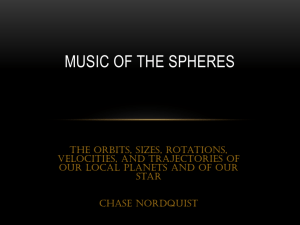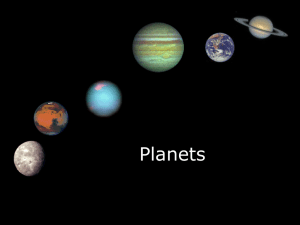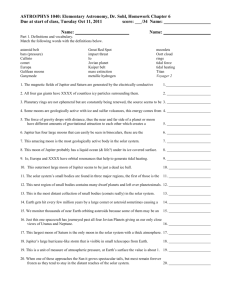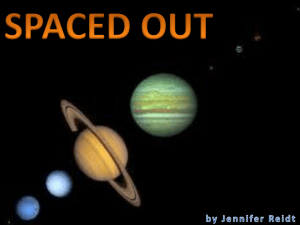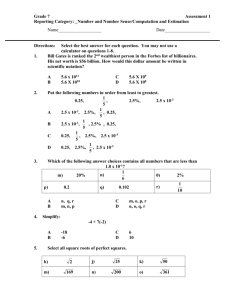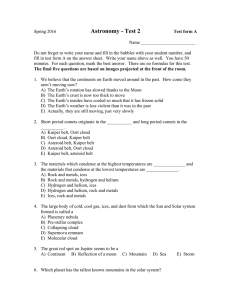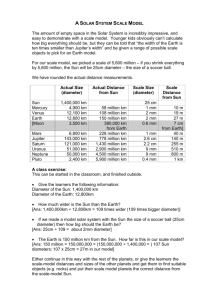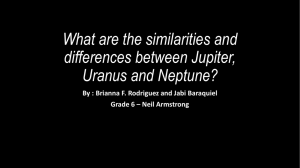Football Field Solar System - University Directory: Western Illinois
advertisement
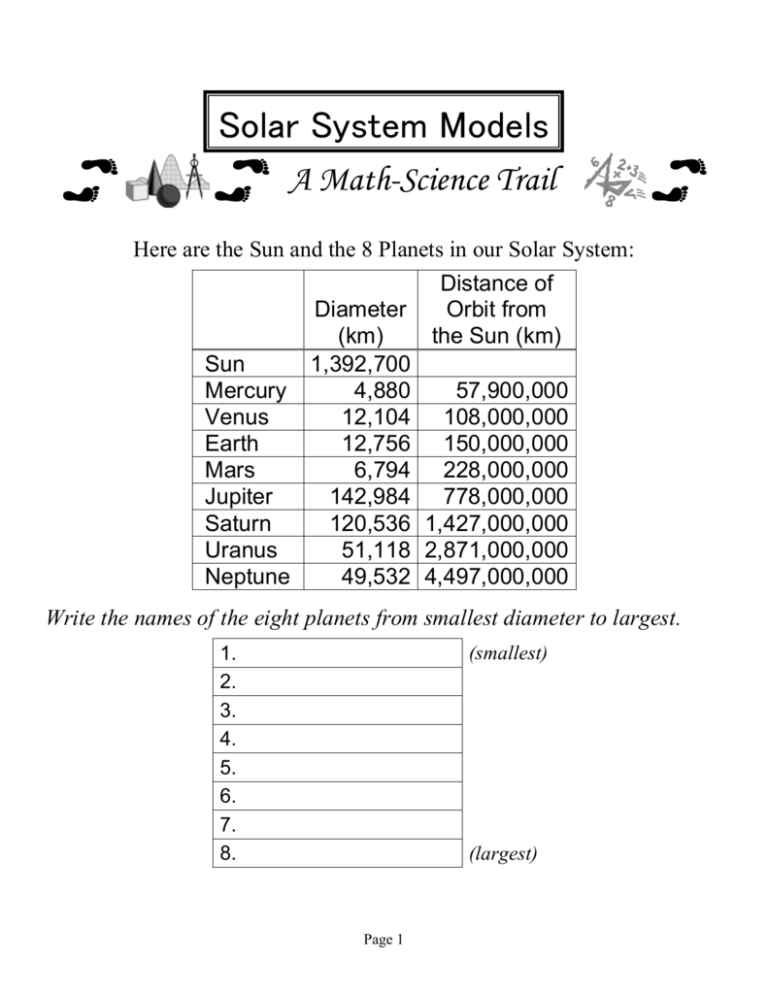
Solar System Models A Math-Science Trail Here are the Sun and the 8 Planets in our Solar System: Distance of Orbit from the Sun (km) Diameter (km) Sun 1,392,700 Mercury 4,880 57,900,000 Venus 12,104 108,000,000 Earth 12,756 150,000,000 Mars 6,794 228,000,000 Jupiter 142,984 778,000,000 Saturn 120,536 1,427,000,000 Uranus 51,118 2,871,000,000 Neptune 49,532 4,497,000,000 Write the names of the eight planets from smallest diameter to largest. 1. 2. 3. 4. 5. 6. 7. 8. (smallest) (largest) Page 1 Size Models We wish to have a model for each planet. If we divide the actual diameters by 600,000,000 (600 million) we get the Diameters of the Models (see the table below). Directions: Measure the diameter of the balls and beads you are provided. Fill in the “Model” column with the name of the ball or bead which is a model for each planet (for example, Jupiter is a “basketball”). (Actual) Diameter (km) Diameter Of the Models Model (ball or bead) basketball Jupiter 142,984 23.4 cm Saturn 120,536 19.6 cm Uranus 51,118 8.5 cm Neptune 49,532 8.4 cm Earth 12,756 2.2 cm Venus 12,104 2.1 cm Mars 6,794 1.2 cm Mercury 4,880 8 mm 1. Our moon has a diameter of 3476 km. The model will have a diameter of about 6 mm. Get a bead as a model for the moon. 2. The Diameter of the Sun is about _____ times the diameter of Jupiter. 3. What is the diameter of the model for the sun? __________ How tall would it be? Page 2 A Second Model: Modeling Distance from the Sun This time, we divide the actual distance from the sun by 150,000,000,000 (150 billion) we get the scale distance from the sun (see the table below). Directions: Put the Sun at one goal line. Then put each planet the correct number of yards from the sun (goal line). Mercury Venus Earth Mars Jupiter Saturn Uranus Neptune Actual Distance from the Sun (km) 57,900,000 108,000,000 150,000,000 228,000,000 778,000,000 1,427,000,000 2,871,000,000 4,497,000,000 Scale Distance from the Sun (meters) .39 m .72 m 1m 1.52 m 5.19 m 9.51 m 19.14 m 29.98 m The distance from the Earth to the Moon ranges from about 360,000 to 405,000 kilometers, depending on the position in the Moon's orbit. Using the scale above (dividing by 150 billion), the scale distance from the Earth to the Moon would be less than .003 m (or 3 mm). Page 3 Other Interesting Facts Jupiter is more than twice as massive as all the other planets combined (318 times Earth). The sun is 1,000 times more massive than Jupiter. At times, Pluto (formerly, but not presently, a planet) is closer to the sun than Neptune (this occurred last in 1999). This is because the orbits of planets are not circles, but ellipses. Our Sun is one of more than 100 billion stars in our galaxy (Milky Way). The speed of light is or 186,000 miles per second (300,000 km per second). It takes a little over 8 minutes from sunshine to reach earth. It takes 4.2 hours for the sun’s rays to reach Neptune. One year (orbit around the sun) on earth is slightly over 365 days. A year on Saturn is over 10,700 days (over 29 earth years). Venus is the third brightest object in the sky (behind the sun and moon!). The world's largest model of the solar system is located near Peoria, Illinois, USA. The sun is painted on the wall of Lakeview Museum of Arts and Sciences and Pluto is located in Kewanee, Illinois. Uranus has been visited by only one spacecraft, Voyager 2 on January 24 1986. Voyager 2 discovered 10 new moons of Uranus (before that we only knew of five). Websites: http://solarsystem.nasa.gov/index.cfm http://www.exploratorium.edu/ronh/solar_system/ http://nssdc.gsfc.nasa.gov/planetary/ This Math/Science Trail was created by James Olsen, Ph.D. Western Illinois University http://www.wiu.edu/users/mfjro1/wiu/ Page 4 This Math Trail can be done on any football field. Page 5 Supplies needed: Balls and beads Meter Sticks Centimeter rulers Signs for the planets. Page 6

